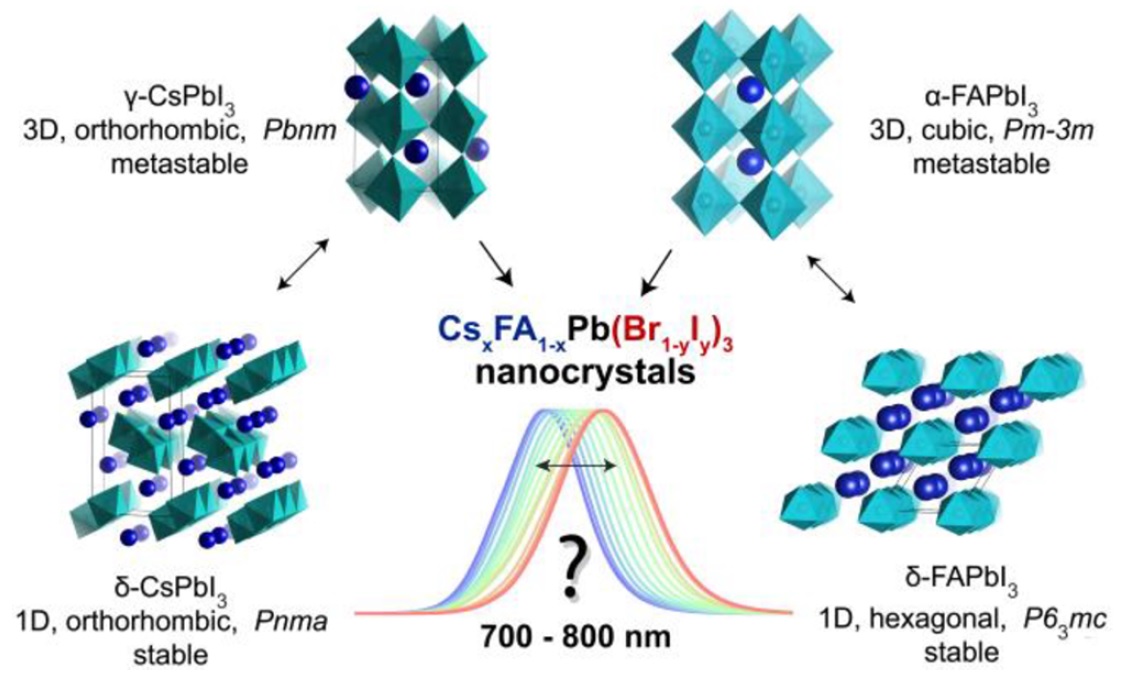[ACS Nano] Exploration of Near Infrared-Emissive Colloidal Multinary Lead Halide Perovskite Nanocrystals using an Automated Microfluidic Platform
Collaborative work led by the deMello and the Kovalenko groups. Optimization of CsPbI3 perovskite nanocrystals in the nIR range.

Hybrid organic–inorganic and fully inorganic lead halide perovskite nanocrystals (NCs) have recently emerged as versatile solution-processable light-emitting and light-harvesting optoelectronic materials. A particularly difficult challenge lies in warranting the practical utility of such semiconductor NCs in the red and infrared spectral regions. In this context, all three archetypal A-site monocationic perovskites—CH3NH3PbI3, CH(NH2)2PbI3, and CsPbI3—suffer from either chemical or thermodynamic instabilities in their bulk form. A promising approach toward the mitigation of these challenges lies in the formation of multinary compositions (mixed cation and mixed anion). In the case of multinary colloidal NCs, such as quinary CsxFA1–xPb(Br1–yIy)3 NCs, the outcome of the synthesis is defined by a complex interplay between the bulk thermodynamics of the solid solutions, crystal surface energies, energetics, dynamics of capping ligands, and the multiple effects of the reagents in solution. Accordingly, the rational synthesis of such NCs is a formidable challenge. Herein, we show that droplet-based microfluidics can successfully tackle this problem and synthesize CsxFA1–xPbI3 and CsxFA1–xPb(Br1–yIy)3 NCs in both a time- and cost-efficient manner. Rapid in situ photoluminescence and absorption measurements allow for thorough parametric screening, thereby permitting precise optical engineering of these NCs. In this showcase study, we fine-tune the photoluminescence maxima of such multinary NCs between 700 and 800 nm, minimize their emission line widths (to below 40 nm), and maximize their photoluminescence quantum efficiencies (up to 89%) and phase/chemical stabilities. Detailed structural analysis revealed that the CsxFA1–xPb(Br1–yIy)3 NCs adopt a cubic perovskite structure of FAPbI3, with iodide anions partially substituted by bromide ions. Most importantly, we demonstrate the excellent transference of reaction parameters from microfluidics to a conventional flask-based environment, thereby enabling up-scaling and further implementation in optoelectronic devices. As an example, CsxFA1–xPb(Br1–yIy)3 NCs with an emission maximum at 735 nm were integrated into light-emitting diodes, exhibiting a high external quantum efficiency of 5.9% and a very narrow electroluminescence spectral bandwidth of 27 nm.
